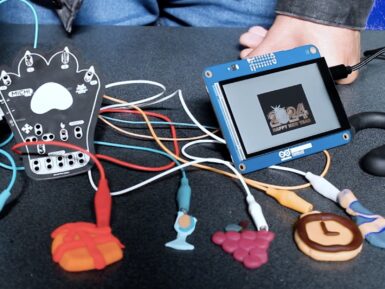
Overview
The OKdo ROCK 3 Model C (ROCK 3C) is a dependable single board computer based on the powerful Rockchip RK3566 SoC in an ultra-small form factor. Despite its compact size, it’s packed with remarkable features, including Quad core Armv8.2‑A Cortex®‑A55 CPU, Arm Mali™ G52 GPU, Wireless support including WiFi 5, HDMI 2.0 port supporting displays up to 1080p resolution, multiple connectivity and storage possibilities, and it’s compatible with a wide range of software operating systems! Whether you’re an engineer, an IoT enthusiast, or a hobbyist looking to create ground-breaking applications we’re certain that you’ll be blown away by the ROCK 3C. This impressive little board is a reliable and extremely capable platform for bringing your ideas to life.
Key benefits of the ROCK 3C single board computer
Reliable Rockchip SoC
ROCK 3C provides reliable and capable performance based on the Rockchip RK3566 SoC, Quad core Armv8.2‑A Cortex®‑A55 up to 1.6GHz, Arm Mali™ G52 GPU, and 32-bit LPDDR4 1GB RAM. Rest assured that its compact size doesn’t mean it’s lacking features, the ROCK 3C will deliver outstanding performance while leveraging outstanding mechanical compatibility.
WiFi onboard, as standard
The ROCK 3C benefits from 802.11 b/g/n/ac Wireless LAN support including WiFi5 and Bluetooth 5.0 making it the ideal solution for supporting your IoT applications, whether you’re looking to create a smart application that requires a reliable Bluetooth connection, or you just want to connect your board to the internet via WiFi, the ROCK 3C has you covered!
More OS, more options
ROCK 3C is a super practical little board, as it is compatible with multiple operating systems, including Android 11, Debian/Ubuntu Linux, the full implementation of the Arm architecture v8‑A instructions set, and others.
No more storage limitations
You may think the ROCK 3C lacks storage capacity with its 32-bit LPDDR4 1GB RAM, however, it benefits from a high-speed eMMC socket for eMMC modules which can be used for data storage and OS. The eMMC socket is compatible with readily available industrial pinout and form factor hardware.
Highly compatible with SBC accessories
There’s nothing more frustrating than getting a new piece of tech and finding out it’s not compatible with your existing accessories. The ROCK 3C’s 40-pin header supports a huge range of interface options, offering an abundance of connectivity capabilities meaning the 3C is compatible with almost every accessory you could think of! On top of that, the dual functionality of many of the pins opens the possibilities for advanced accessories, the sky is the limit!
Supports 1080p display
With an Arm Mali™ G52 graphics processing unit (GPU) at its heart, the ROCK 3C is ideal for multimedia applications, such as videos, and signage. The board benefits from camera and display interfaces, HDMI 2.0 port supporting display up to 1080p resolution, near-CD-quality audio output through a 4-ring 3.5mm audio jack with mic input, and more.
Documentation
Get Inspired

Display real-time meeting room availability, synchronized with Google Calendar through Arduino IoT Cloud.

Watching back a slideshow of some of your favorite times of the past years is a great way to reflect on what’s happened and get excited for the future. The Electronic Cats crew wanted to incorporate this concept into a more simplified, interactive form which resulted in the Garrita project. Garrita is a homemade platform that lets an Arduino GIGA R1 WiFi with GIGA Display Shield transform into a highly mobile slideshow thanks to its larger onboard memory capacity and convenient layout. This year, the Electronic Cats were able to take their image shifter concept even further with Michi: an existing project that turns any conductive object into a capacitive touch-sensing controller. Whenever one of Michi’s inputs are toggled, the board sends a signal to the GIGA R1 WiFi that causes the current slide to advance to the next one. In order to go from a locally stored image to something on the Display Shield, users first transform their images into a more suitable format via the LVGL conversion tool. Once downloaded, the resulting files can be easily bundled into a Sketch before they become accessible in the application code. To see more about how the Electronic Cats built Garrita, you can read their write-up here on Hackster.io.










